If there’s one artist who can be placed at the crossroads between old and modern art, then it’s Paul Cézanne (1836-1906).
This influential French artist paved the way for a new generation of artists in the early 20th century which marked the transition between the ideals of Impressionist artists, Post-Impressionist artists, and Cubist artists.
Let’s take a closer look at The Large Bathers by Paul Cézanne, the largest in a series of famous Cézanne paintings with the same subject.
1. The painting remained unfinished upon the artist’s death in 1906
The life of Paul Cézanne took a drastic turn for the worst in the year 1890. This was the year that he was diagnosed with diabetes, a condition that resulted in all sorts of health problems.
He became extremely solitary during this period and mainly focused on his painting in his native Aix-en-Provence, avoiding social contact as much as he could.
The remarkable thing about this is that he gained respect from a new emerging generation of pointers as his rebellious paintings were purposely produced to be disliked by the general public.
He constructed the “Atelier de Cézanne” in Aix in the early 20th century. Here his paintings could be admired by young aspiring artists.
He never completed The Large Bathers upon his death in 1906, a painting he started working on in 1898.
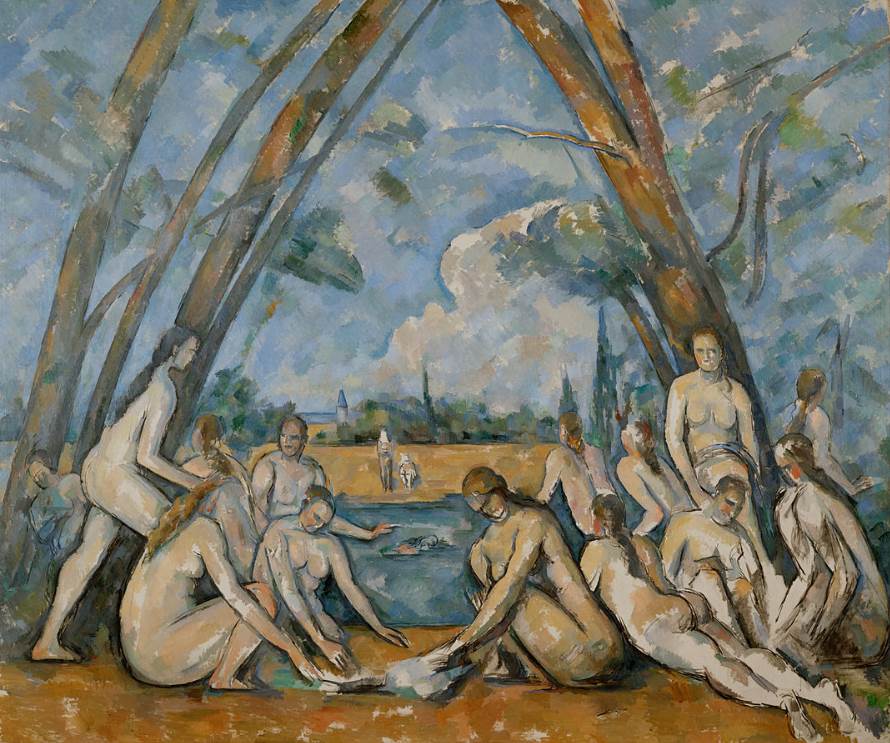
2. It’s referred to as The Large Bathers to distinguish it from the other versions
Just like his famous Card Players series, Cézanne produced many versions of this subject. All of these have different compositions and feature different figures.
The painting described in this article is the largest in the series and is therefore referred to as “The Large Bathers” or “The Big Bathers.”
The other 5 versions of this series are all smaller and are on display in some of the most famous museums in the world. Below is an overview of these paintings:
Bathers 1
- Date created: 1874–1875
- Dimensions: 38.1 x 46 centimeters (15 x 18.1 inches)
- Location: Met Museum, New York City, United States
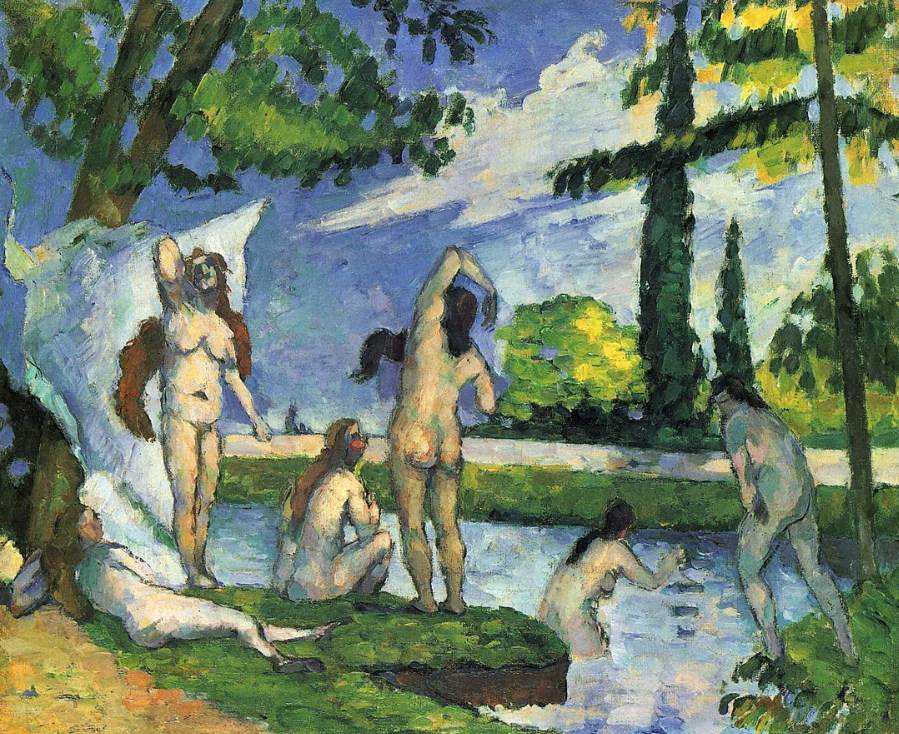
Bathers 2
- Date created: 1890-1891
- Dimensions: 54.2 x 66.5 centimeters (21.3 x 26.1 inches)
- Location: Hermitage Museum, Saint Petersburg, Russia
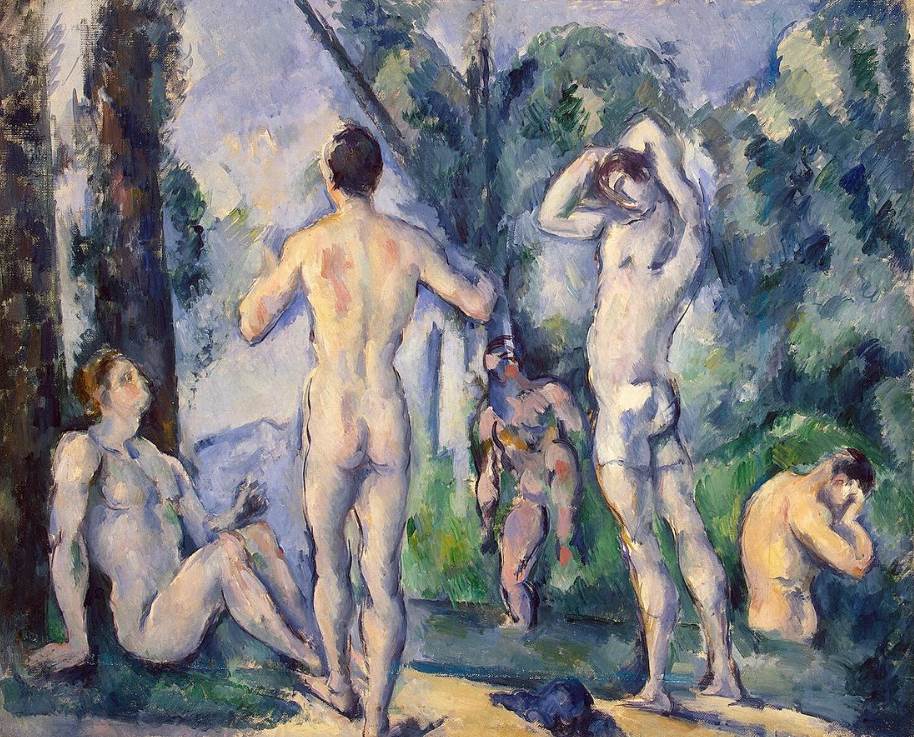
Bathers 3
- Date created: 1894–1905
- Dimensions: 136 x 191 centimeters (53.5 x 75.1 inches)
- Location: National Gallery, London, United Kingdom
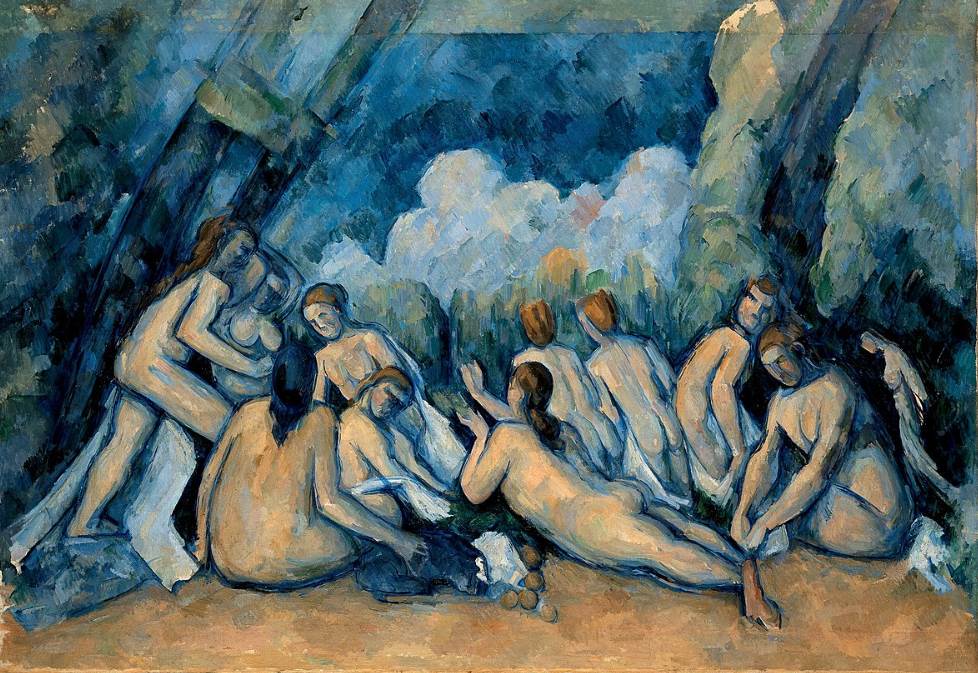
Bathers 4
- Date created: 1895–1906
- Dimensions: 82 x 101,2 centimeters (32.28 x 39.84 inches)
- Location: Barnes Foundation, Philadelphia, Pennsylvania, United States
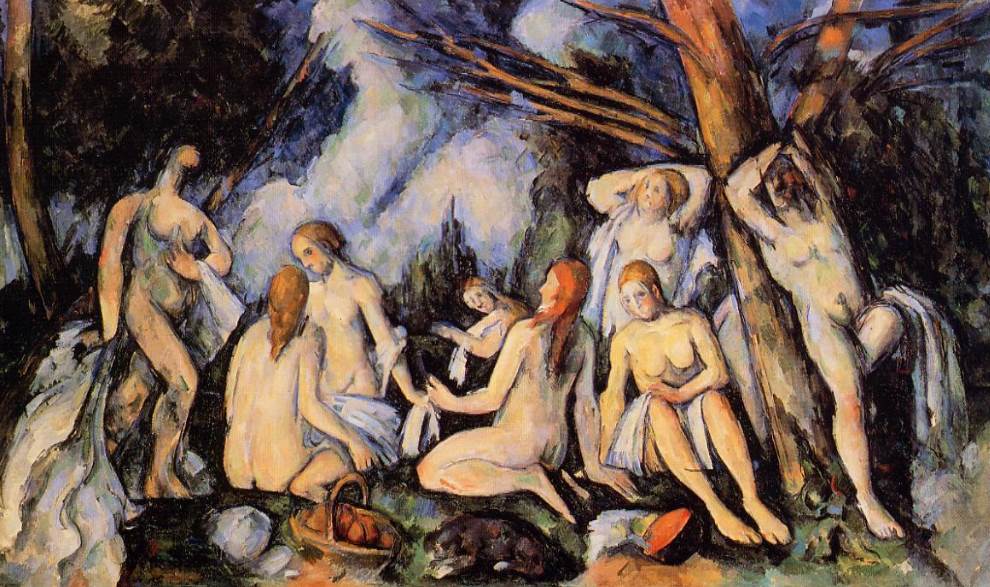
Bathers 5
- Date created: 1900–1905
- Dimensions:
- Location: Art Institute of Chicago, United States
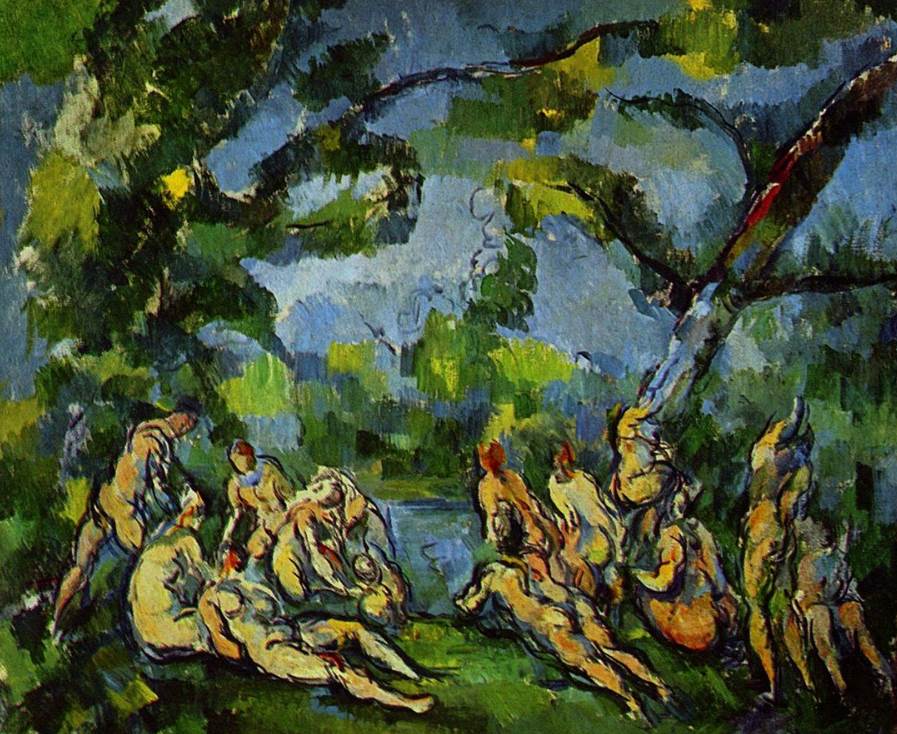
3. The series marks the transition between Post-Impressionism and modern art
Although Cézanne is considered to be a Post-Impressionist artist, his Post-Impressionist paintings were distinctively advanced compared to some of his colleagues.
He aimed to simplify the depiction of objects and figures to their most basic geometrical form. He did so by creating relatively small brushstrokes to create larger fields.
This was essentially the foundation of the Cubist art movement and the main reason why he is considered to be the precursor of modern art.
It’s also why both Pablo Picasso and Henri Matisse referred to Cézanne as “The Father of Us All.”
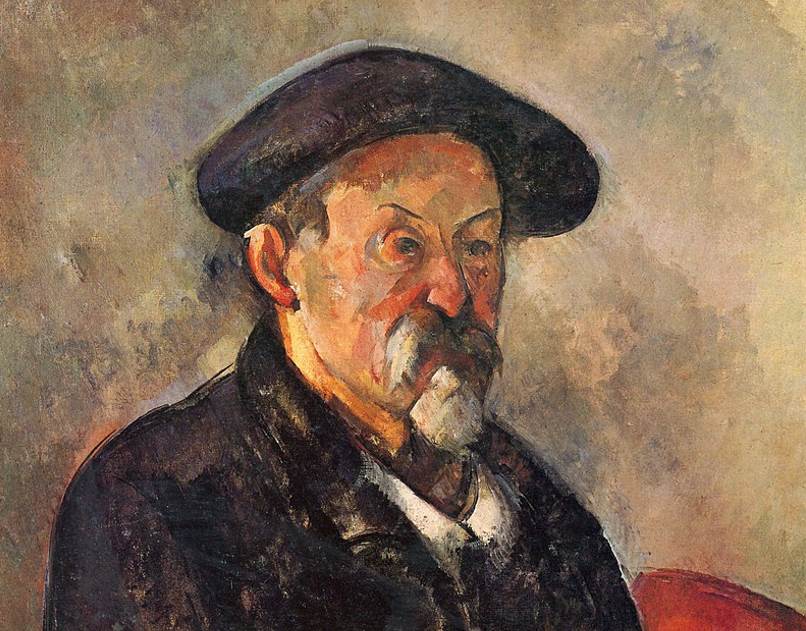
4. The painting features a remarkable triangular composition
The artist also often experimented with different compositions. This is why none of his series feature identical works as he added different elements and figures in all of them.
In the Large Bathers, he produced a triangular composition using the nude bathing women and river in the foreground as a base and the trees on the sides to complete a symmetrical triangle.
This type of composition can be found as early as the Renaissance, especially in da Vinci paintings and Madonna paintings by Raphael.
Subsequent artists perfected this technique to produce monumental works of art, including Titian and Rubens.
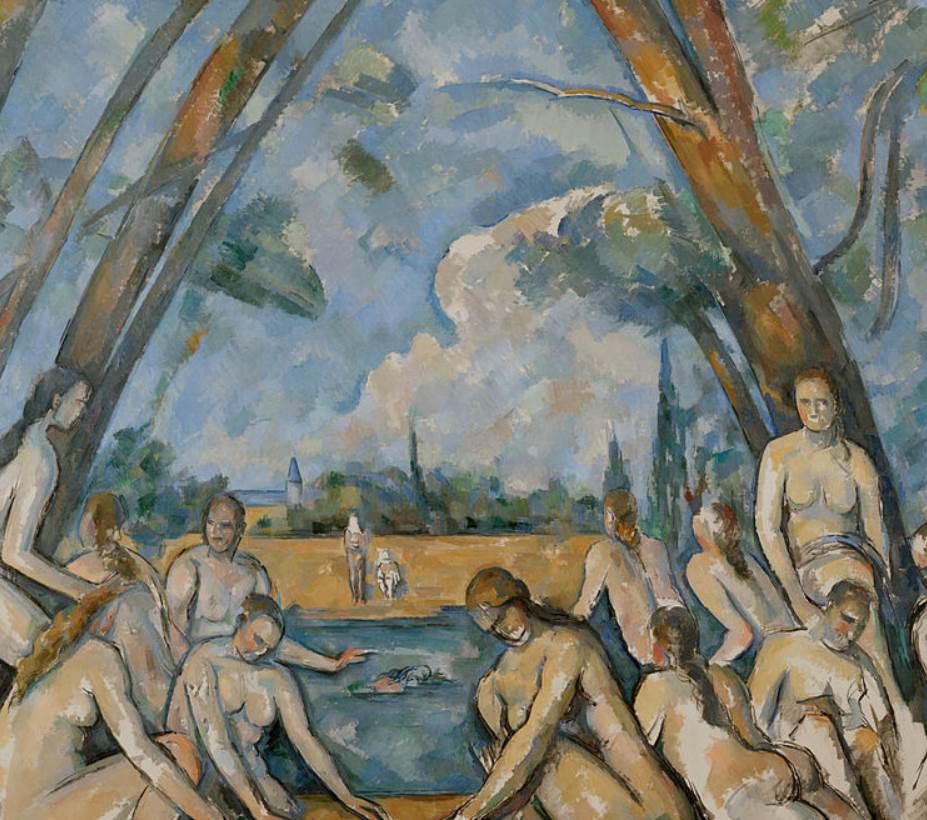
5. The painting influenced similar works completed in the early 20th century
Most of the paintings in the Bathers series feature an overly crowded scene of nude women (although one also features nude male figures) in peculiar positions.
Although this painting was only exhibited for the first time in 1906, art historians have suggested that Cézanne was pivotal in the development of Cubism.
Shortly after Cézanne’s works were exhibited, Pablo Picasso painted one of his most famous paintings called “Les Demoiselles d’Avignon” (1907).
This work, part of the collection of the MoMA in New York City, is considered to be a “proto-Cubist” painting and the figures are believed to have been inspired by the nude females present in The Large Bathers.
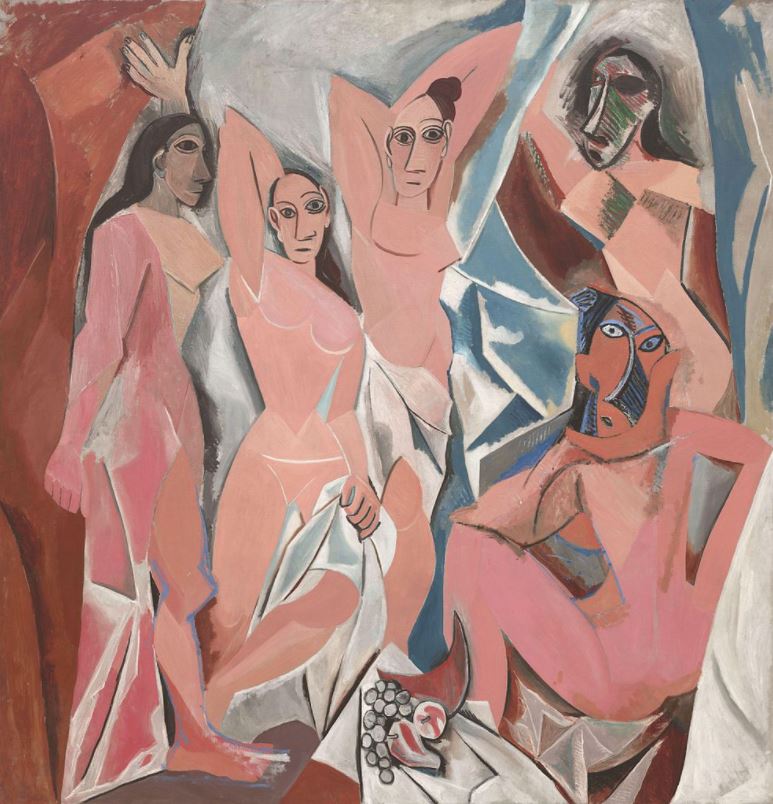
6. The painting was owned by an American art collector until the 1930s
The painting entered the collection of Leo Stein (1872-1947), the brother of Gertrude Stein (1874-1946, a renowned American novelist, poet, and art collector.
Gertrude had lived in France since 1903 and amassed a great collection of art produced by French artists, including Paul Cézanne.
The painting was eventually sold by Leo Stein to the Philadelphia Museum of Art in 1937 for the sum of $110,000. That’s the equivalent of over $2.2 million today.
This large sum was gathered from a trust fund of Joseph E. Widener (1871-1943), the founding benefactor of the National Gallery of Art in Washington D.C.
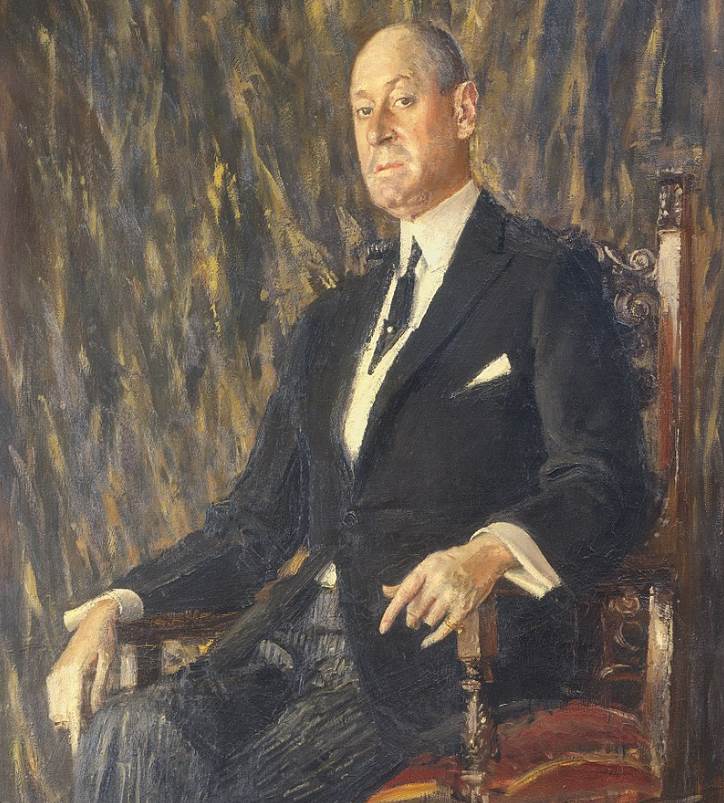
7. How big is The Large Bathers by Paul Cézanne?
The Large Bathers by Paul Cézanne is by far the largest of the Bathers series, although the one at the National Gallery in London is pretty big as well.
The oil on canvas painting has dimensions of 210.5 × 250.8 centimeters (82.87 × 98.25 inches).
8. Where is the painting located today?
The painting was acquired by WIderer’s trust fund and entered the collection of the Philadelphia Museum of Art shortly after.
The acquisition in 1937 wasn’t without controversy, after all, this was a period of great poverty caused by the Great Depression which only ended in 1939.
Today, the painting is still one of the major attractions at the museum and is worth a multitude of what was paid for it, making it a wonderful investment indeed!




